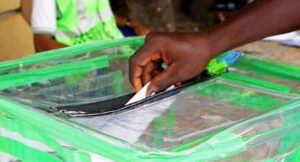Debt Accumulation: Significance of reconfiguring operating system of loan acquisition cum application
Accumulation of debt in Nigeria has continued to be a subject with unending discourse. The mere reflex of the thoughts of the risks ahead of the Country with increasing resort to borrowings to cater for deficits in annual and supplementary budgets over the years, have been a source of worry to those who are foremostly concerned about the economic future of the Country. Since economic matters are largely interconnected with other facets of life – social, political, cultural, among others – it is clear that the impossibility of isolating the effects of heavy burdens of debts holds ravaging impacts that would spread across all walks of life. Hence, the manifestation of such impacts is expected to portend clustered circumstances which may make societal fabrics debilitated to such extent that meaningful development may be encumbered and relatively overpowered by frustrations of encumberance of disturbances arising from such clumsy atmosphere.
While outcries over the mounting profile of debts have continued to assume echoing dimensions, it is without doubt, evident that the Government of Nigeria has found no alternative to addressing the needs of revenue shortfalls than resorting, time to time, to borrowings. Hence, in the space of the last six years, it is evident that Nigeria’s debt profile has soared above 100 per cent increase.
Indications have shown that the Federal Government’s domestic borrowing will further record upsurge in the second half of the year, (H2 2021). The modification of the 2021 fiscal plan by the Government with a supplementary budget, has revealed realities of worsening of the Country’s debt profile. It would be recalled that the Federal Government had modified the 2021 fiscal plan with a supplementary revenue projection of about N135 billion on a total supplementary expenditure of N982.7 billion. Indications thereof reflect that the supplementary budget would increase the annual deficit by N847.729 billion. Breakdown of the supplementary appropriation had indicated that the deficit would be financed through a debt of about N802.102 billion; aid/grants N6.045 billion; and restructured loans of N39.582 billion. It is reminiscent that there was a N5.6 trillion fiscal deficit in the initial 2021 budget of the Federal Government. Hence, with the inherent deficit in the supplementary budget, the combined fiscal deficit for 2021 would now accumulate to a peg of about N6.5 trillion, forming about 16.1 percent rise above the initial plan. The FG has proposed plans to borrow N3.1 trillion from local investors to fund the N6.5 trillion fiscal deficit of Y2021 budget, while the balance will be funded through external borrowings.
Further signals of heaping of debt stocks took expression on Monday with a submission of the Federal Government of a proposal to the National Assembly (NASS) to acquire loans to the tune of N5.62 trillion to finance deficits in the N13.918 trillion 2022 budget. The FG has in another development altered provisions contained in the Medium Term Expenditure Framework (MTEF), and Fiscal Strategy Paper (FSP), by slashing the capital expenditure in the proposed 2022 budget by N259.3 billion. The 2022—2024 MTEF/FSP are documents containing provisions of prescriptions of the Federal Government’s socio-economic and developmental objectives and priorities for the time frame in question (2022 to 2024). It contains provisions of financial strategies and policies to achieve government economic priorities, with highlights of the key drivers of government’s revenue and the purview of expenditure plans.
In the proposal, “the budget deficit that is projected for 2022 is N5.62 trillion, up from N5.60 trillion in 2021.” The key macro-economic assumptions contained in the MTEF/FSP include a crude oil benchmark price of $57 per barrel for 2022, crude oil production of 1.88 million barrels per day, and a dollar exchange rate of N410.15 to one US dollar, an inflation rate of 13 percent in 2022, and a nominal GDP of 149.369 trillion.
The Minister for Finance, Budget and National Planning, Zainab Ahmad, while presenting the 2022—2024 Medium Term Expenditure Framework (MTEF), and Fiscal Strategy Paper (FSP), before the House of Representatives Committee on Finance, had stated that the reduction in capital expenditure became necessary given economic volatility occasioned by unstable global oil market as well as effects of the COVID-19 pandemic. She mentioned that: “The deficit is going to be financed by new foreign borrowing. And domestic borrowing, both domestic and foreign in the sum of N4.89 trillion, then privatisation proceeds of N90.73 billion and drawdowns from existing project titles of N635 billion. This amount represents 3.05 per cent of the estimated GDP, which is slightly above the 3 per cent threshold that is spent recommended in the Fiscal Responsibility Act.”
Economic indices have continued to reflect worsening profile of the Nigerian economy. Indices of economic stability are largely on the negative side for the Country. With troubling unemployment statistics, 82.9 million Nigerians have been adjudged to be living in poverty. The exposure of the Nigerian economy to aversion in the foreign exchange market and devaluation of the naira, are negative omens. The burdens that rise from debt servicing in a confluence with all these defects are strains which frown against bright prospect for the Country’s economy.
While it is understandable that borrowings in itself may not be an outright bad idea, it is however unjustifiable when the purposes for their acquisition fail to satisfy or fulfill good outcomes. On this ground, loans constitute no more than entangled burdens when they are acquired and misapplied as expenditures on projects lacking prospects of returns. It remains an established fact that borrowing for recurrent is known to be the height of economic irrationality. Moreover, the acquisition of loans to finance failed projects which were ill-defined and wanting of structures of returns for repayment, is no less a reflection of poor administration of the macro economy. It is observable that the weakened system of loan administration with poor repayment strategies through returns, have made the burden of debt become a torn in the Country’s flesh over the years.
Hence, it is pertinent to note that while the present Administration may be on pressure to address wobbling strains of the economy, it is pertinent that decisions are not those portending grave threats to the Country in future. Thus, heaping debts with continuous borrowings to satisfy immediate needs against the futuristic threats they pose to the Country, is to a large extent, a recipe for short term failure and long term catastrophe, particularly where structures to propel returns for their repayment do not reflect ray of light.
As economic deformities continue to wax gross with worsening wobbles amidst continuous borrowings ridden with expenditures on projects which have not lived to prove their worth and return potentials for repayment, the outcry against the Government over every attempt to obtain new loans may be justifiable. The exploitable leakages of uncoordinated structures with gaps through which borrowings are exposed to risk of shortages, are potent threats against intended projects, for which loans were acquired, to face stronger possibilities of failing in achieving appreciable results for returns to effect repayment. It is observable that borrowings under the poor monitoring patterns, deficient implementation apparatuses and corruption driven system, have to a larger degree failed, and as such, done more harms than good to the Country’s economy.
It is paramount for the Government to take a rethink on redefining the configuration of structural formations guiding the proposal, processes, acquisition and usage of loans towards the end of ensuring they achieve their intended purposes. It is inarguable that there is no excuse for failure of loans to achieve their expected objectives. Hence, to the effect that loans to a larger extent have fallen short of records of outliving their purposes with substantive returns for repayment, the burdens of debts have continued to weigh the Country down. While the impacts of such strains may be gradual in terms of the records of offshooting threats, it is evident that the end results will be catastrophic to the economy when the situation is left to gravitate towards unrecoverable end where debt servicing stiffens expenditures on capital projects.
As subsisting realities reflect the Country moving towards such end, it is pertinent for the Government of Nigeria to take a rethink on reconfiguring the operating orientation of the system informing and instructing the processes of loan proposals, its acquisition, usage and impact/implementation assessment as well as success evaluation or otherwise. This is imperative to check for loopholes to address to avoid continuous tales of failure of projects for which enormous funds were borrowed for.




